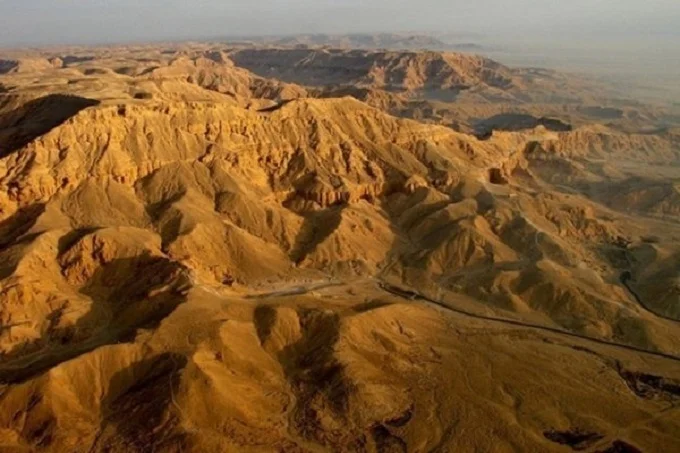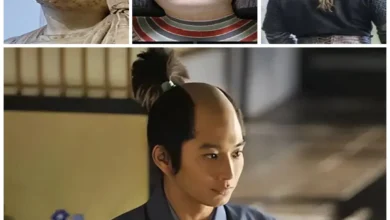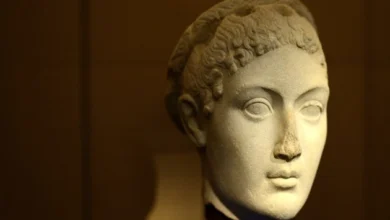Ta Set Neferu – Valley of the Sleeping Queens

Ta Set Neferu is a famous necropolis located southwest of Medinet Habu in Egypt, not far from Thebes. It is an ancient Egyptian location where the queens or wives of pharaohs were buried.
The first to explore the valley was the Italian Giovanni Battista Belzoni, an amateur archaeologist. He went there in 1816 and tried to excavate as many tombs as he could. Belzoni is accused of damaging many archaeological sites. He did not view them from the point of view of an explorer, but was a treasure hunter.
In 1828, John Gardiner Wilkinson found 24 tombs. Later, Champollion, Roseling and Carl Richard Lepsius carried out work on the registration and preservation of the found tombs, mummies and artifacts. The first professional expedition to the valley was organized at the beginning of the 20th century, when Ernesto Schiaparelli and Francesco Ballerini explored the ancient necropolises. To date, 98 tombs have been discovered in the Valley of the Queens.
The name Ta Set Neferu means “place of beauty” or “place for royal children”. The tombs discovered in the valley date back to 1550-712. BC. Most of them were plundered in antiquity, many were reused in the Roman period. Animal mummies were placed in some of the oldest graves.
Wise advisers of the Egyptian Pharaohs
After the fall of the XVIII dynasty, the country needed strong new rulers. In addition to good education and charisma, Ramses I, Seti I and Ramses II had another advantage – they were supported by wise women.
The first of them is Sitre, her name means “daughter of Ra”. The Queen’s Tomb was discovered in the 19th century. She belonged to the family of a Lower Egyptian soldier who may have served in the army of Horemeb, the last pharaoh of the 18th dynasty.
Sitre became the wife of Ramesses I, who changed the country after a difficult period of rule by previous kings. She was crowned as a great queen. Written sources say that she was not just a wife, but also the closest adviser and friend of the pharaoh. Sitre was the mother of Pharaoh Seti I, who became one of the most prominent Egyptian rulers in history.

Sitre’s tomb was the first in the valley, the paintings in it are badly damaged, but the queen’s face is still visible on one of the walls. The queen died at an advanced age, choosing a wife for her son Seti, her successor Tuyu, also known as Mut-Tui.
Tuya became another influential woman of the 18th dynasty who supported her husband. Her father was Raya, a military officer. Tuya gave birth to Ramesses II and remained an active politician until her death in the 22nd year of her son’s reign. Tui’s tomb is more damaged than Sitre’s tomb, most of the precious artifacts have disappeared since antiquity. The Luxor Museum houses a piece of a canopic canopy from Tui’s tomb.
Pearl of the Valley of the Queens
The name Nefertari means “beautiful companion”. The story of her love with Ramesses II is one of the most romantic in the history of ancient Egypt. After Nefertari’s death, the pharaoh expressed his feelings for his wife in an inscription in her tomb. The inscription testifies that Ramesses II really loved her, the death of Nefertari broke his heart. She was chosen as a wife by Ramesses himself, not by the imperious Tuya, although the mother was responsible for finding a future wife for her son.
Ramesses saw the beautiful Nefertari and decided to marry her. However, their marriage caused a scandal due to her belonging to the family of Au, her father. Everything related to the Amarna period was not approved (the reign of the pharaohs Akhenaten and Smenkhkare in the XIV-XIII centuries BC, in the Late Bronze Age. In the sixth year of his reign, Akhenaten founded the new capital Akhetaton in Central Egypt, which was located on the site of modern Amarna, in a valley surrounded by mountains on the east bank of the Nile, 300 km south of Cairo). The hatred for the old dynasty was so strong that Ramesses II decided to destroy the city’s ruins created by Akhenaten and Nefertiti. He used the stones to build a new capital.
When Schiaparelli entered the tomb of Nefertari in 1905, he was shocked by the damage done by the robbers and fascinated by the beauty of the paintings, which are well preserved. Unfortunately, most of the treasures were stolen from the tomb or damaged. The mummy was destroyed, only the queen’s mummified knees were found in the tomb.
What happened to other parts of her body? They may have been taken to Europe to produce “mummy powder”, a popular medicine among European nobles, especially in the 18th and 19th centuries. Some of the artifacts found in the tomb are exhibited in a museum in Turin.

Tombs of other queens
Many wives of pharaohs are buried in the Valley of the Queens, among them Titi. It is not known which of the Ramesses was her husband, probably Ramesses III. Her tomb is very similar to the tombs of his sons, it is possible that she could be the mother of some of them. Her tomb has a corridor leading to a square burial chamber and two small rooms. The paintings are poorly preserved, but some scenes with the winged Maat can be distinguished. On one wall, the queen is depicted in front of the sons of Horus.
The tombs of the wife of Ramses III, the mother of Ramses VI and other queens were also found. Many tombs are still waiting to be explored.




